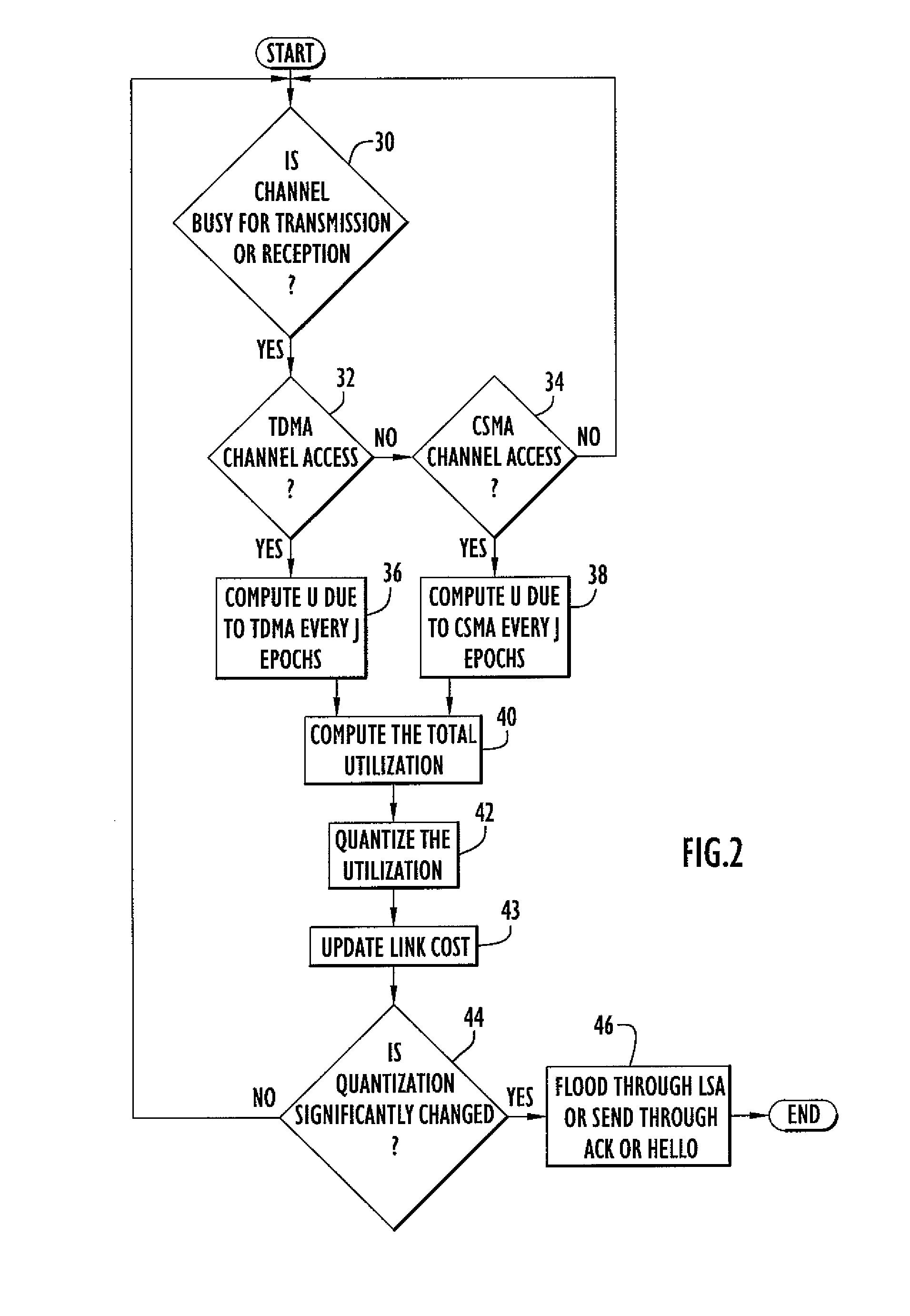Method and apparatus for early warning of congestion in Ad-Hoc wireless networks
a wireless network and congestion prevention technology, applied in the field of wireless networks, can solve the problems of packet dropping, degradation of network throughput, and several techniques described above, and achieve the effects of avoiding packet dropping, preserving transmission bandwidth, and reducing throughpu
- Summary
- Abstract
- Description
- Claims
- Application Information
AI Technical Summary
Benefits of technology
Problems solved by technology
Method used
Image
Examples
Embodiment Construction
[0020]The present invention embodiments measure congestion, preferably within Ad-Hoc wireless networks, based on communication channel utilization in order to avoid congested communication links. The present invention embodiments determine congestion by measuring the number of time slots used for transmission and reception of information, thereby providing an accurate representation of communication channel occupancy. This requires no periodic sampling since the measurements are made when the communication channel is busy.
[0021]With respect to Ad-Hoc wireless networks, conventional communication channel access techniques include Carrier Sense Multiple Access (CSMA) and Time Division Multiple Access (TDMA). The present invention embodiments accumulate separately for each network node the time slots utilized for TDMA and CSMA. The accumulated time slots for TDMA and CSMA are combined to indicate the congestion or utilization level for the particular node. The utilization level is quan...
PUM
 Login to View More
Login to View More Abstract
Description
Claims
Application Information
 Login to View More
Login to View More - R&D
- Intellectual Property
- Life Sciences
- Materials
- Tech Scout
- Unparalleled Data Quality
- Higher Quality Content
- 60% Fewer Hallucinations
Browse by: Latest US Patents, China's latest patents, Technical Efficacy Thesaurus, Application Domain, Technology Topic, Popular Technical Reports.
© 2025 PatSnap. All rights reserved.Legal|Privacy policy|Modern Slavery Act Transparency Statement|Sitemap|About US| Contact US: help@patsnap.com



